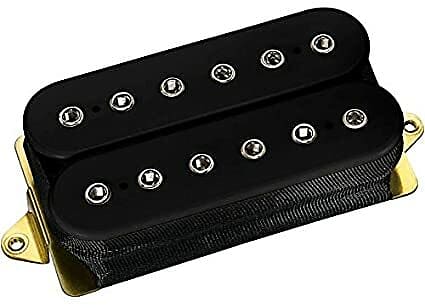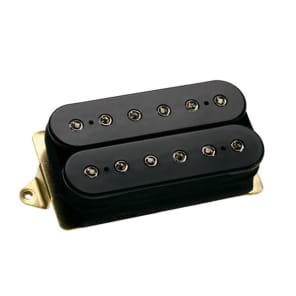This pickup started a sound revolution. Replacement pickups simply didn’t exist before the invention of the Super Distortion in the early Seventies. The Super Distortion (and its original 3-conductor version, the Dual Sound) was the first pickup specifically designed to kick a tube amp into total overdrive, and is still the standard by which all other high-output pickups are measured. The Super Distortion has a perfect blend of power and tone: both single-notes and chords jump out of the amp and fill the room (or the track) with a wall of sound. The balance of tones is classic — thick, boosted mids, big lows and fat highs. This is the sound you’ve heard for over three decades on platinum records, from players as varied as Ace Frehley, Al Di Meola, and Paul Gilbert. It’s also versatile: 4-conductor wiring allows instant access to Strat-like split and series-parallel modes. Discover what thousands of great players know: the Super Distortion is the best all ’round high-power pickup ever made.
Recommended For: The Super Distortion is primarily a bridge position pickup, although it can be used in the neck position with a relatively low-gain amp. Specifically designed for solid-bodies: hollow and semi-hollow guitars can be hard to control with warm, high output pickups.
Quick Connect: No
Wiring: 4 Conductor
Magnet: Ceramic
Resistance: 13.68 Kohm
Year of Introduction: 1972
Bill's Music is not authorized to sell Dimarzio products to customers outside of the USA and Canada! No international orders will be accepted!
Please make your selection carefully. There are no returns or exchanges on pickups!


